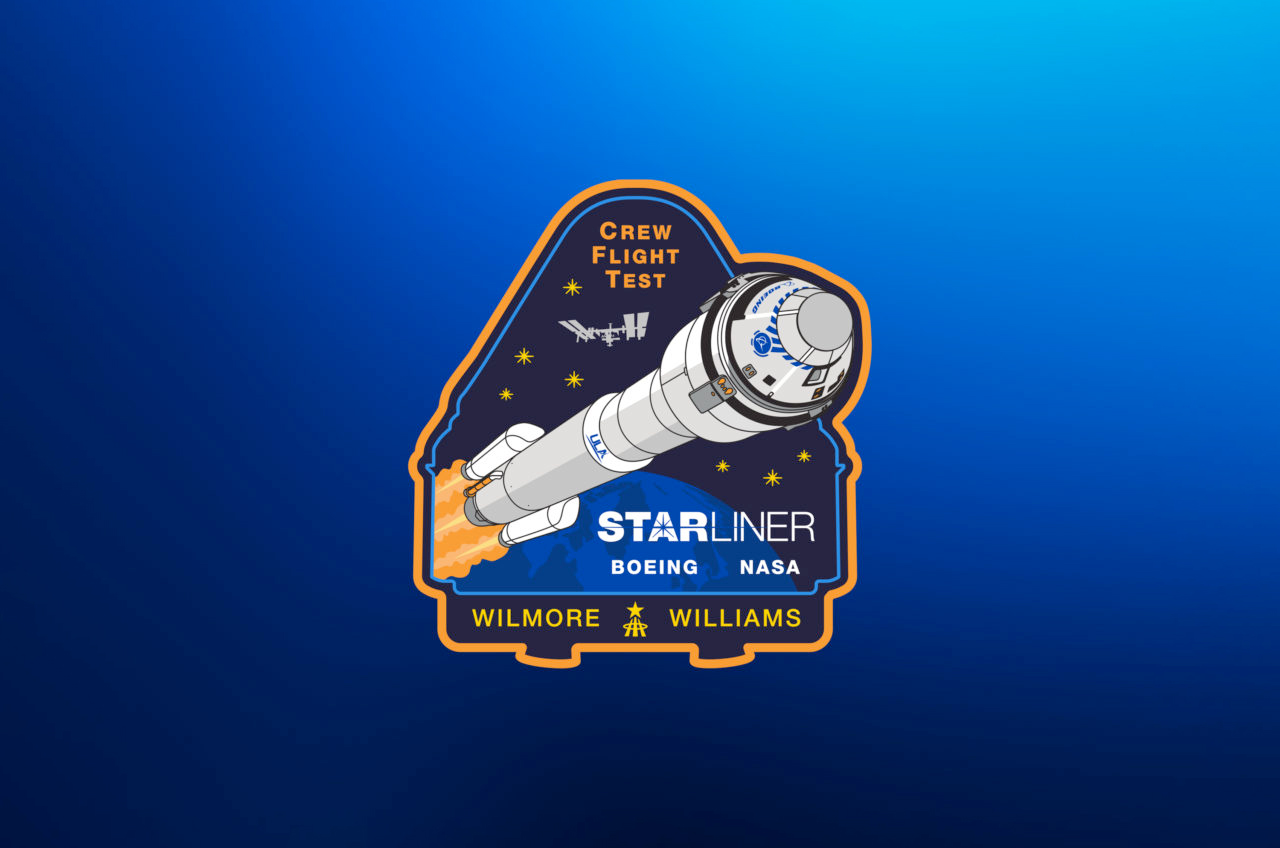Crew set to fly on Boeing Starliner add final touches to mission patch
The color orange and the marbled blue Earth each symbolize aspects that are personal to the NASA astronauts who are set to launch on Boeing's Starliner spacecraft for the first time.

Boeing has finalized the design of its first crew mission patch after the astronauts assigned to the test flight were seen wearing an early version of the emblem.
The aerospace company is preparing for the third test flight of its CST-100 Starliner commercial spacecraft. The Crew Flight Test (CFT), targeted for April, will mark the vehicle's first launch with astronauts on a short duration mission to and from the International Space Station. NASA astronauts Barry "Butch" Wilmore and Sunita "Suni" Williams will fly the Starliner on its planned final shakedown cruise before it begins carrying four-person crews on NASA-contracted flights supporting the orbiting complex.
Both Wilmore and Williams helped redesign the CFT patch, replacing a version that dated back before their assignment to the mission. Wilmore and Williams are represented in the final design through the use of specific colors and details.
Related: Boeing's Starliner OFT-2 test flight for NASA in photos
The prominence of orange, for example, surrounding the Starliner and United Launch Alliance (ULA) Atlas V rocket is based on the hue's traditional association with flight testing. The choice of "flight test orange" is also a nod to the astronauts' own experiences in qualifying new vehicles.
Both Wilmore and Williams are experienced naval aviators and test pilots, who combined have spent 11,000 hours in more than 50 aircraft, including the F/A-18 Hornet, T-45 Goshawk, H-46 Sea Knight and V-22 Osprey.
"We wanted to incorporate [in the design of the patch] all aspects of the CFT mission to include launch and the primary focus of the mission as being a first flight test," said Wilmore, in a statement released by Boeing on Thursday (Jan. 5).
Breaking space news, the latest updates on rocket launches, skywatching events and more!

In October of last year, Wilmore and Williams wore an early version of the CFT patch while taking part in a validation test at NASA's Kennedy Space Center in Florida. The embroidered emblem was similar to the final design, but some of the lettering was sewn using yellow thread instead of orange.
The earlier version also omitted identifying that the flight was a Boeing and NASA endeavor. The names of both entities have now been added to the patch.
With the reveal of the finalized art, Boeing also shared insight into the inspiration and symbolism behind some of the design choices.
The patch's outline of the Starliner and Atlas V represents the future of commercial human spaceflight. The border, according to Wilmore, also honors those who have been a part of the evolution of the Boeing capsule, from its first designers to those who fabricate, operate and will fly the spacecraft.
The blue marbling of Earth symbolizes Williams' love of the ocean and highlights the role of the CFT Starliner spacecraft, named "Calypso," as the gateway to doing research off the planet just as Jacques Cousteau's research vessel Calypso did on Earth. Williams christened the capsule following its first launch into space, on Boeing's first Orbital Flight Test (OFT), in 2019.
The depiction of the International Space Station signifies Starliner's destination in space and both astronauts' time as crew members on the orbiting laboratory.
Finally, the seven stars surrounding the space station are meant as a reminder of the astronauts who traveled to space during NASA's Mercury program, while the astronaut symbol between Wilmore and Williams' names represents all who will follow in their footsteps after Starliner receives its safety certification from the U.S. space agency.
Wilmore and Williams will be the first astronauts to launch atop an Atlas rocket since the four Mercury orbital flights piloted by John Glenn, Scott Carpenter, Wally Schirra and Gordon Cooper in 1962 and 1963.
"Historically, mission patches have included seven stars, which signifies the history of human spaceflight, all the way back to the original Mercury 7," Wilmore said.
Follow collectSPACE.com on Facebook and on Twitter at @collectSPACE. Copyright 2023 collectSPACE.com. All rights reserved.

Robert Pearlman is a space historian, journalist and the founder and editor of collectSPACE.com, a daily news publication and community devoted to space history with a particular focus on how and where space exploration intersects with pop culture. Pearlman is also a contributing writer for Space.com and co-author of "Space Stations: The Art, Science, and Reality of Working in Space” published by Smithsonian Books in 2018.
In 2009, he was inducted into the U.S. Space Camp Hall of Fame in Huntsville, Alabama. In 2021, he was honored by the American Astronautical Society with the Ordway Award for Sustained Excellence in Spaceflight History. In 2023, the National Space Club Florida Committee recognized Pearlman with the Kolcum News and Communications Award for excellence in telling the space story along the Space Coast and throughout the world.

